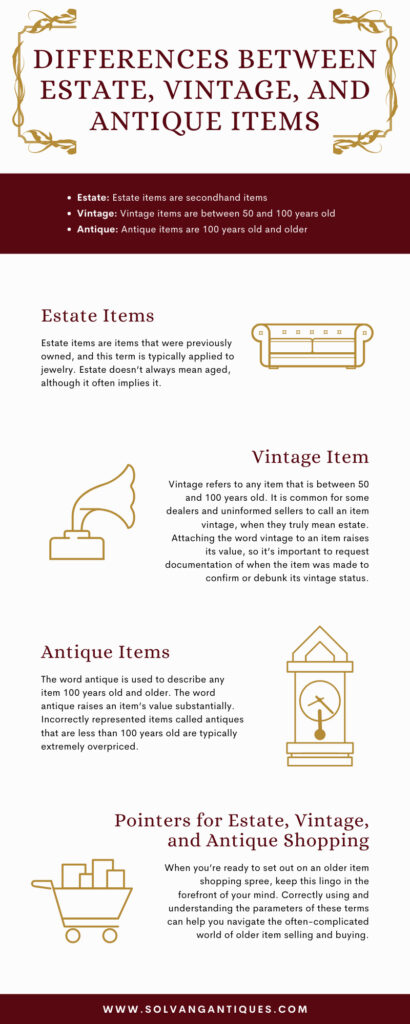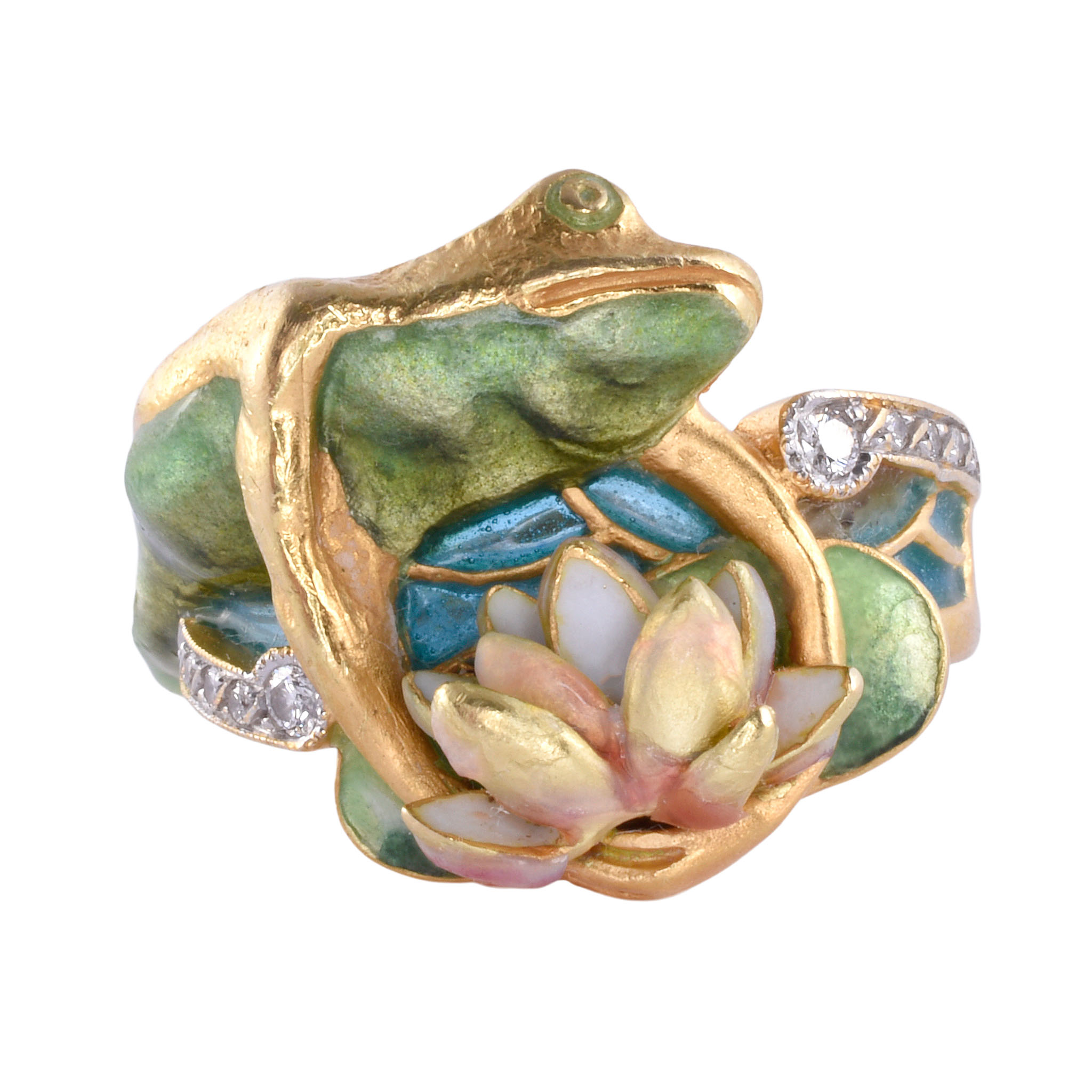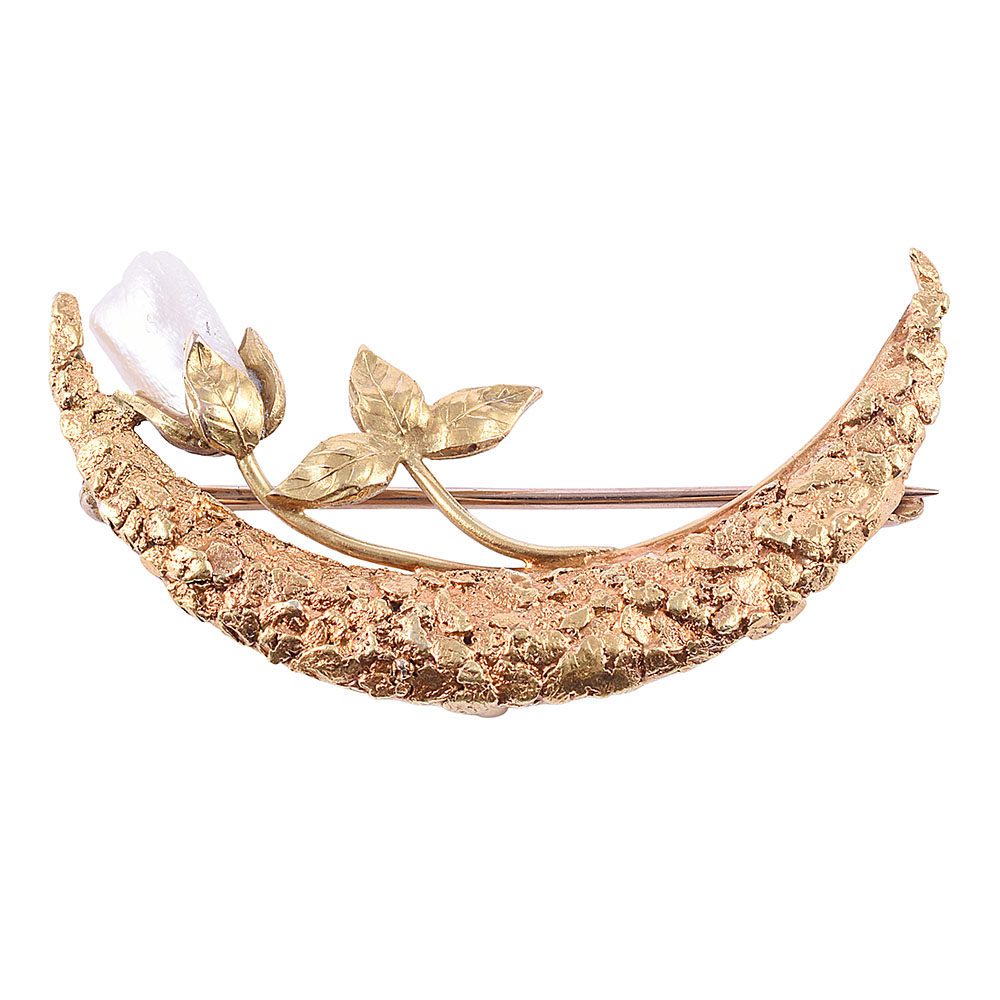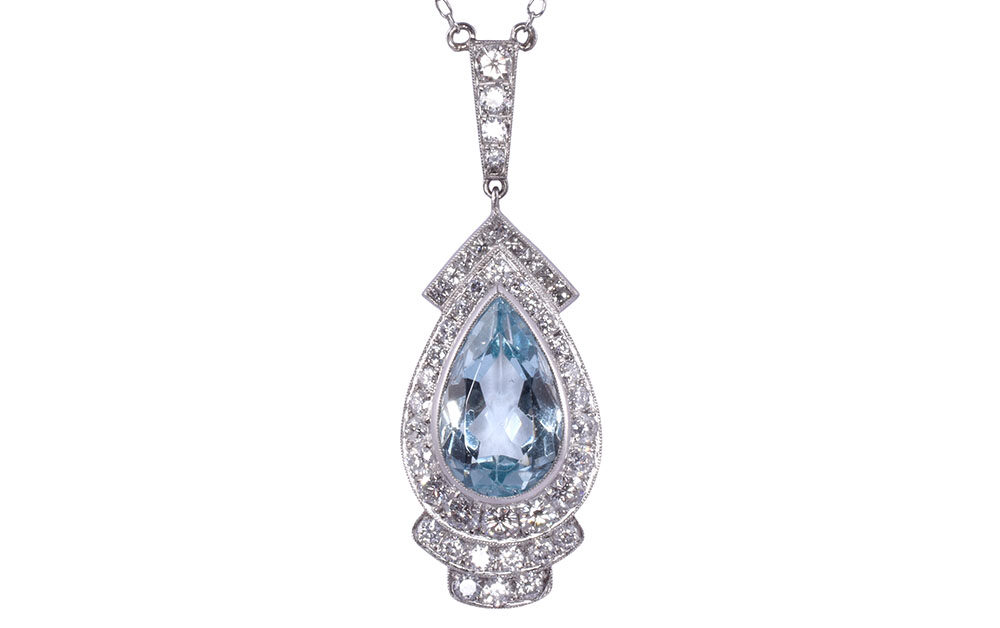Differences Between Estate, Vintage, and Antique Items
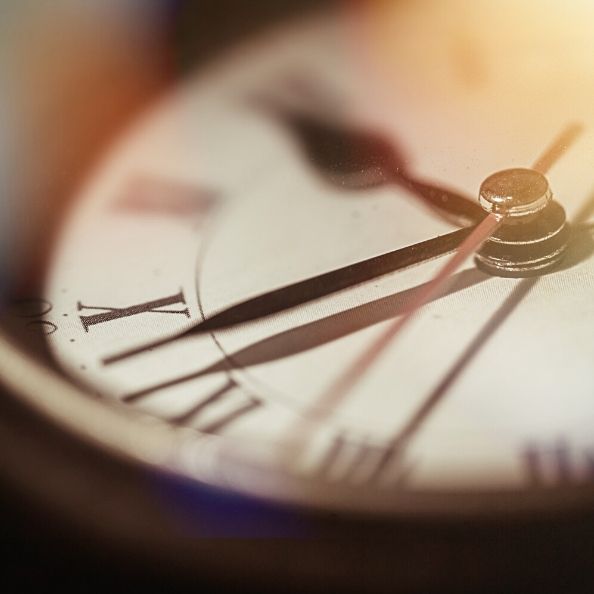

Shopping anywhere you may have heard the terms “vintage” attached to many items in stores or seen an old piece of furniture called an “antique,” but not really understood the parameters of these terms. Avid shoppers of older items might be well-versed in the terminology, but many people misuse the terms. Dealers can also be misinformed, so it’s best practice to come prepared with some insights on the terms. While shopping for older items, you may run into some terms that seem interchangeable—but really aren’t.
There are differences between items that are called estate, vintage, or antique. Knowing these can help you navigate the world of buying old items, identify reputable dealers, and ultimately pay the right price for the item or items you want. A reputable dealer will know these differences and represent their items accordingly. Items derive their value from many avenues; one of these is the age of an item. Using the term antique on an item that isn’t antique can drive the price up, but the purchaser wouldn’t be getting what they paid for. Learn the key differences between estate, vintage, and antique items before embarking on your search for older items.
Here are some brief definitions of each item, which are expanded upon below.
- Estate: Estate items are previously owned, less than 50 years old
- Vintage: Vintage items are between 50 and 100 years old
- Antique: Antique items are 100 years old and older
Estate Items
Estate items are items that were previously owned, and this term is typically applied to jewelry. For example, if a woman got a wedding ring in 1984 and now her daughter wants to use the wedding ring in her own marriage, that ring is now considered to be an estate ring. This term technically refers to any used item; meaning any second-hand piece is considered estate. This is a very broad term, since it describes any item previously owned.
While the above example of a ring made in 1984 being estate is still accurate, another example is if a couple got engaged three years ago, called off the wedding last month, and sold the engagement ring. This ring would now be considered estate jewelry—even though it’s only three years old. Estate doesn’t always mean aged, although it often implies it. When shopping for estate items, always ask the dealer for information on when the item was produced. Estate items are the best value and can still hold the same high qualities as vintage and antique items
Vintage Item
Vintage refers to any item that is between 50 and 100 years old. The term vintage is often used in contexts where it does not apply. It is common for some dealers and uninformed sellers to call an item vintage, when they truly mean estate. Attaching the word vintage to an item raises its value, so it’s important to request documentation of when the item was made to confirm or debunk its vintage status. This will ensure that you’re paying what an item is worth and not overpaying due to improper representation of items.
An example of a truly vintage item is a dresser made in 1935. While this dresser is not quite an antique, it does qualify as a vintage item because it was made 85 years ago. In the year 2035, this same vintage dresser will transition to an antique. Items cannot be both vintage and antique at the same time. Vintage items can become antiques after enough time has passed, but at this point, they stop being vintage.
Antique Items
The word antique is used to describe any item 100 years old and older. Many times, stores will incorrectly label or incorrectly define an item as antique before the 100-year mark has passed for the item. The word antique raises an item’s value substantially. Incorrectly represented items called antiques that are less than 100 years old are typically extremely overpriced. With any older item, especially an antique, ask the dealer or seller for documentation on when the piece was made. Some antiques may also come with paperwork or provenance; both provide a backstory of the item.
Researching the antique prior to purchasing it is a great way to learn a lot about an era and a piece. This practice can also ensure that you’re paying a fair price for it. Antique items are generally crafted with high quality and extreme attention to detail, making them worth even more and unique. When purchasing antique items, do some research prior and don’t be afraid to ask about the item’s history. Most reputable dealers will be more than happy to discuss the item’s background with you.
Pointers for Estate, Vintage, and Antique Shopping
When you’re ready to set out on an older item shopping spree, keep this lingo in the forefront of your mind. Correctly using and understanding the parameters of these terms can help you navigate the often-complicated world of older item selling and buying. Using these terms correctly in context while shopping will also let sellers know you’re informed and knowledgeable about the terms—and thus the industry. This can open the door for further discussion and help finding the perfect item for you.
Next time you’re shopping for antiques, estate items, or vintage items, brush up on the terminology so you’re prepared to impress and find the right items for the right price. Remember that estate refers to any item that is previously owned and less than 50 years old, vintage means any item that is between 50 and 100 years old, and antique is only used for items 100 years and older. To truly get the best finds possible, check out the offerings at Solvang Antiques; we’ve got a little something for everyone.
